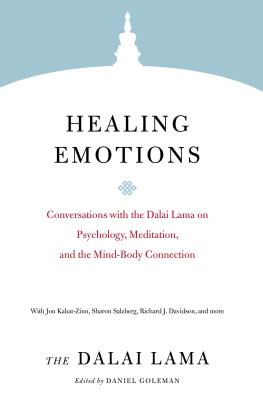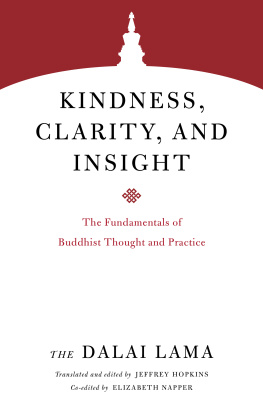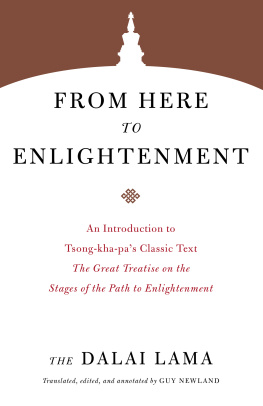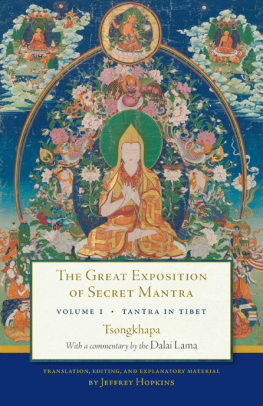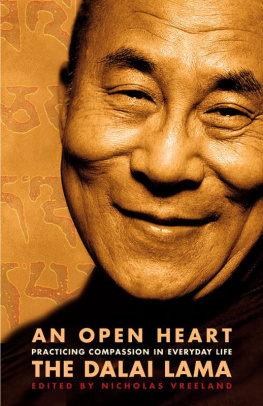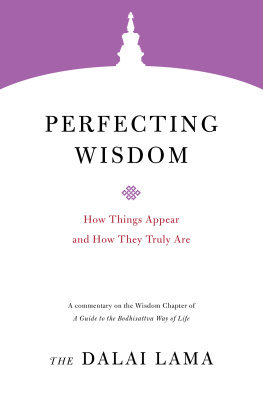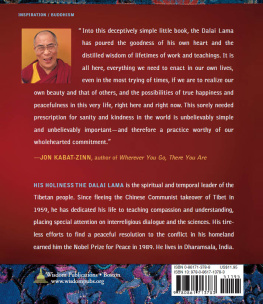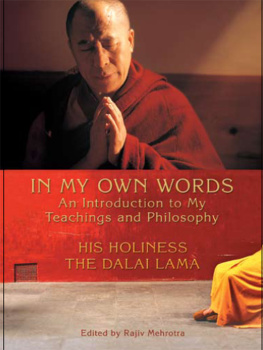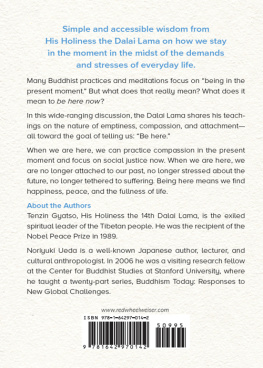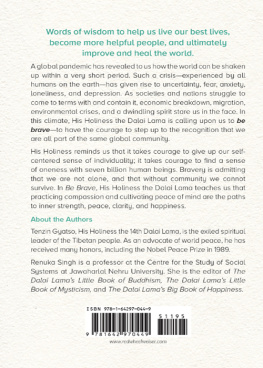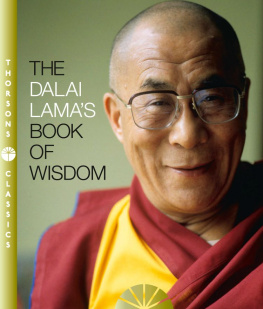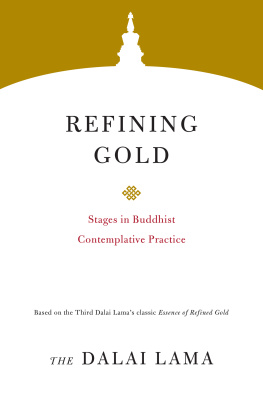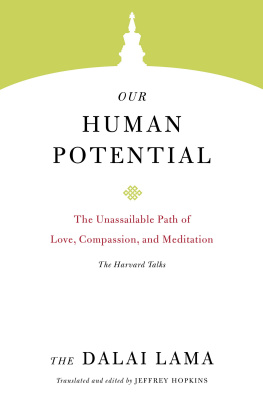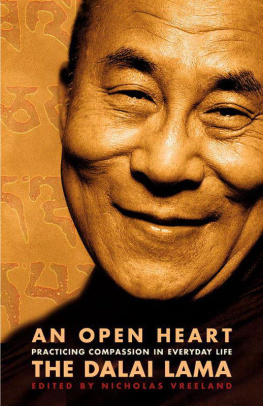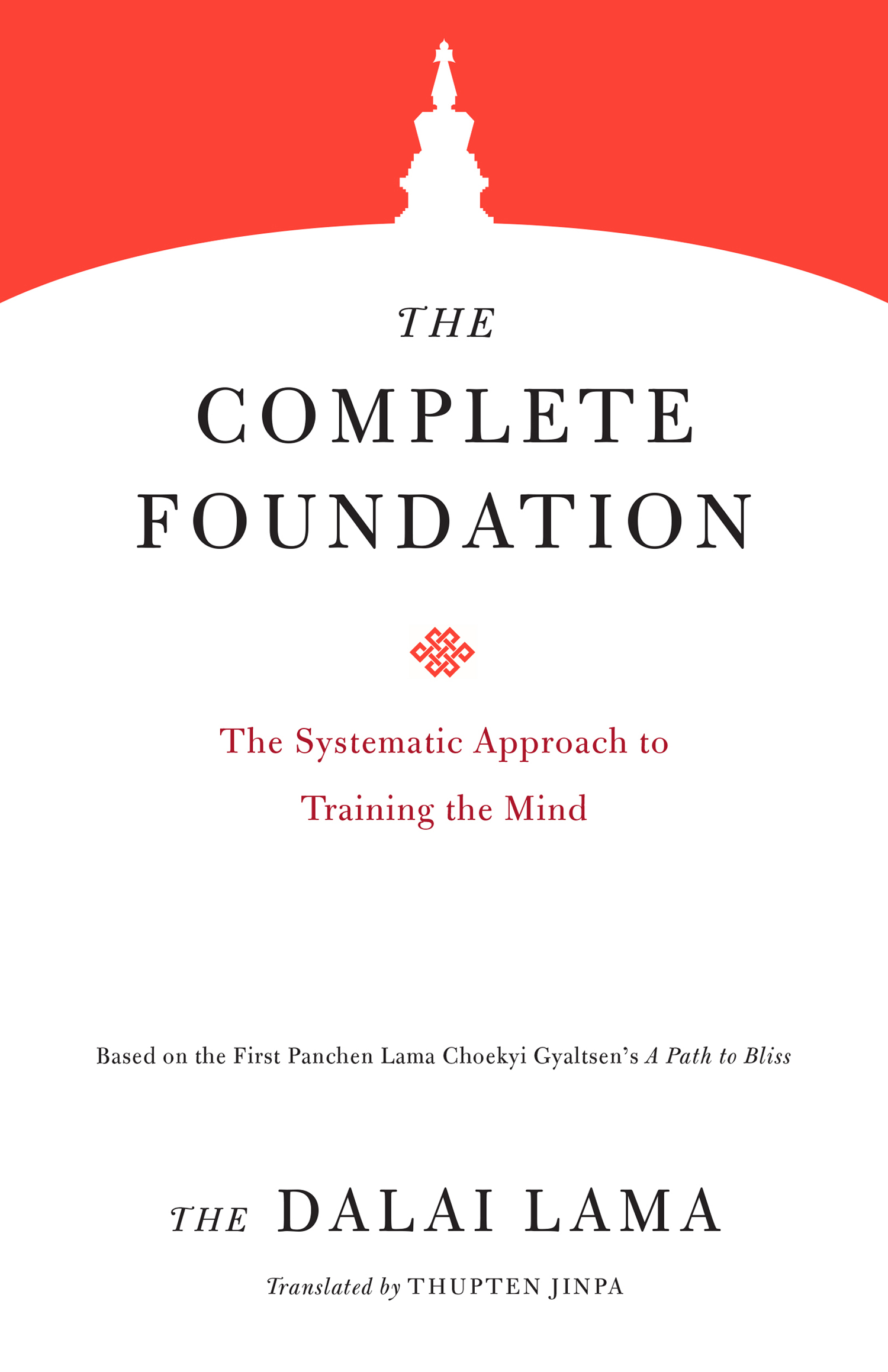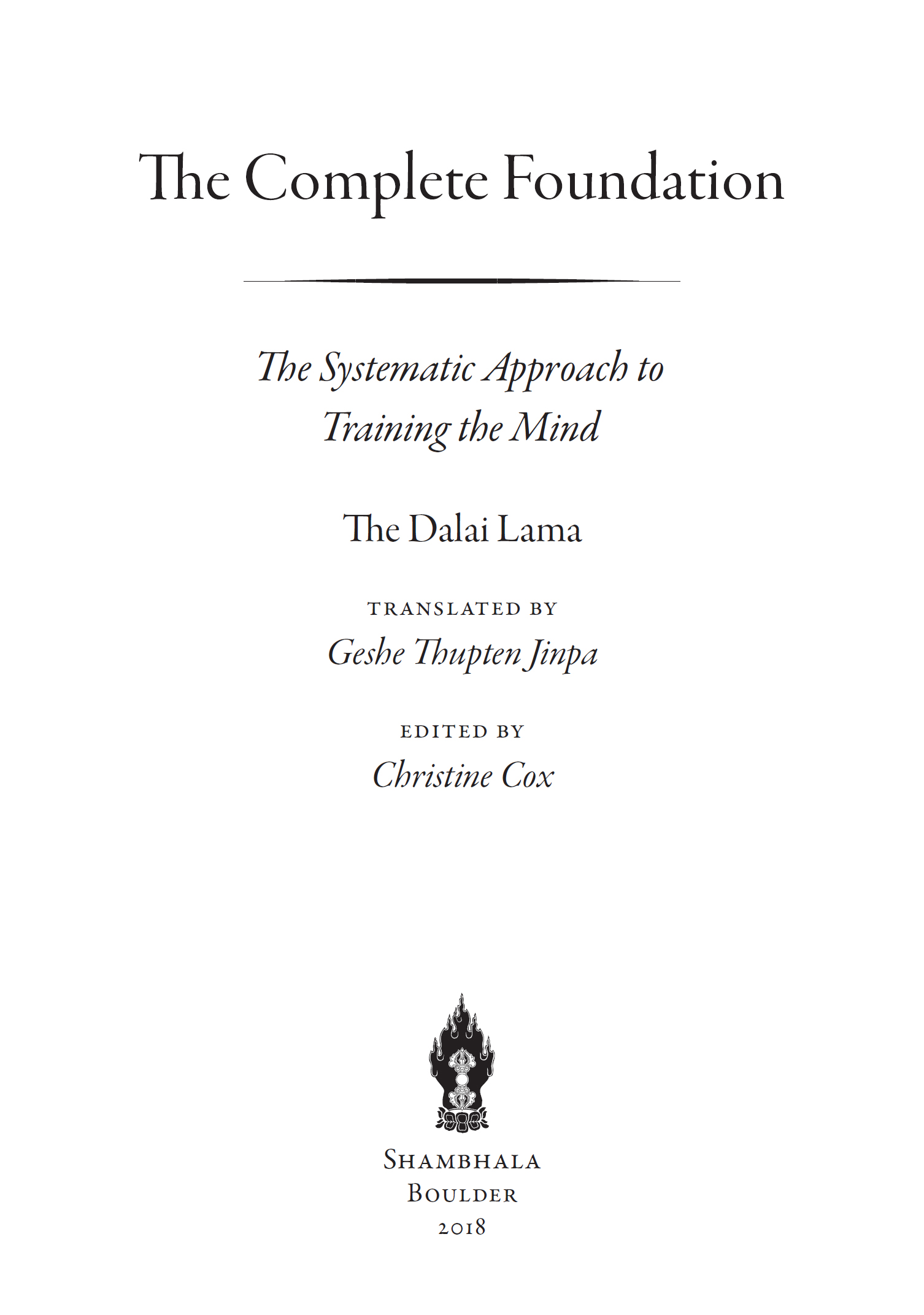P REFACE

T HE SYSTEM OF meditation known as Lamrim, stages of the path to enlightenment, was begun by the great eleventh-century saint-scholar Atisha and has been developed over successive generations by Tibetan meditators. It originated with Atishas eloquent work in verse appropriately titled Lamp for the Path to Enlightenment, in which he condensed the essence of the entire Buddhist training of the mind in the stages of mental development suitable to the trainees of initial, middling, and highest capacity. The great scholar and adept Tsongkhapa based his much admired text Lamrim Chenmo (Great Exposition on the Stages of the Path to Enlightenment) on this classic work; it explores in great depth the subject matter of Atishas Lamp.
As was the original intent of the authors, the beauty of Lamrim lies in its systematic approach to training the mind through meditative contemplation, taking into account the complexity of the human mind. With Lamrim practice, one embarks upon a fresh spiritual journey in uncovering the layers of mists that obscure the human personality. Its approach is simple, rational and yet profound and does not presuppose any knowledge or training on the part of the beginner. The example of many great meditators testifies to the efficacy of the Lamrim system. Beginning with elementary trainings, such as how to adopt a sound and right mental outlook and motivation in ones life, it leads the practitioner to the profound discovery of the reality, emptiness, that underlies the entire expanse of phenomena. Such an insight brings into question the very basis and validity of many of our strongly held conventional beliefs which are at the root of all our fluctuating emotions, thus showing the discrepancy between the way things are and how we perceive them to be. This revelation, when developed with the bodhisattva motive of universal compassion to work for the benefit of all beings, comes into its perfection in a state beyond duality and conceptuality. It is the state of full enlightenment, where the individual is free of all limitations and has brought his or her human potential to its fullest development, so as to be of limitless service to his or her fellow beings.
The Complete Foundation: The Systematic Approach to Training the Mind is a translation, based on an oral teaching of H.H. the Fourteenth Dalai Lama, of Panchen Lobsang Choekyi Gyaltsens Lamrim, titled Path to Bliss Leading to Omniscience. The teaching was given at the main temple in Dharamsala, India, in the spring of 1988 together with several other discourses. The translation was first done simultaneously at the teaching, and was then later corrected by comparing it to the Tibetan tapes. As the type of commentary given on the text at the discourse was experiential in nature, the tradition requires four repetitions of the main sections of the practices. These repetitions have been incorporated in this book into a single body, thus presenting the entire teaching in an easily readable, yet complete, written form.
A brief note is owed to the reader on the editing of His Holinesss original teaching. Being a commentary on the First Panchen Lamas Lamrim, the original format of His Holiness teaching followed the structure of that text in which all the main Lamrim meditations were explained within the framework of the preliminary, main, and concluding practices. However, in this book the format has been altered a little to suit the needs of both readers and practitioners. The book is divided into three parts. Part One comprises a general introduction to the spiritual path of a Buddhist practitioner and the origins of the Lamrim instructions. Part Two deals with the elements of preliminary practices within the framework of the six stages of preparation. It ends with an instruction on activities during the between-session periods and a summary note explaining how to integrate the preliminaries with the main Lamrim meditations. In Part Three, all the main Lamrim meditations are explained by topic so that they can be either studied and practiced in conjunction with the preliminary practices found in the preceding chapters, or reflected upon independently. Since the practice of a bodhisattvas way of life is a crucial element in the Lamrim path, the procedure of the ceremony through which a bodhisattva trainee commits himself/herself to follow such an ideal is included in Part Three. Other vital materials on the practices of a bodhisattva, such as the bodhisattva vows and precepts of thought transformation practice, are given in appendices. For readers who wish to cross-refer the sections of this book with the original Tibetan version of The Complete Foundation, the translation of the outline of the original text is provided in Appendix Three. In conforming to the spirit of His Holiness the Dalai Lamas personal approach to teaching, a certain style of language has been adopted in this book. Every attempt has been made to keep the language as clear and succinct as possible to convey the spirit of His Holiness thoughts without compromising the accuracy of the translation. Notes and a glossary have been prepared to assist readers with the technical terms used in this book, and a brief bibliography has been provided for the texts cited in this work.
We would like to express our deep thanks to Mrs. Joyce Murdoch, who undertook the difficult task of making the initial transcript of the translation from the tapes. Our grateful acknowledgment is also due to Glenn Mullin, who permitted us to quote several verses from his translation of the Lamrim preliminary rite in


